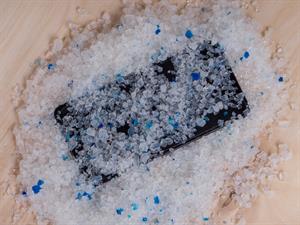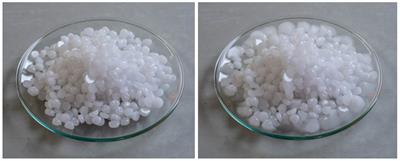
PUMPA - SMART LEARNING
எங்கள் ஆசிரியர்களுடன் 1-ஆன்-1 ஆலோசனை நேரத்தைப் பெறுங்கள். டாப்பர் ஆவதற்கு நாங்கள் பயிற்சி அளிப்போம்
Book Free DemoHygroscopy:
When certain substances are exposed to ambient air at room temperature, they absorb moisture without changing their physical state. These substances are known as hygroscopic substances, and this property is known as hygroscopy. Hygroscopic substances are used as drying agents.

Mobile phone covered in silica gel
Sometimes when accidently mobile phone gets wet, we can put it in a bag of silica gel filler to absorb the moisture.
Example:
Concentrated sulphuric acid ((H_2SO_4\)), phosphorous pentoxide ((P_2O_5\)), quick lime ((CaO\)), silica gel ((SiO_2\)).
When exposed to the atmospheric air at ordinary temperatures, certain substances that are so hygroscopic absorb enough water and get completely dissolved. Such substances are called deliquescent substances, and this property is called deliquescence.
Deliquescent substances lose their crystalline structure and eventually dissolve in absorbed water, forming a saturated solution.

Deliquescence in sodium hydroxide
Deliquescence is maximum when:
- The temperature is low
- The atmosphere is humid
Example:
Caustic soda (NaOH), Caustic potash (KOH) and Ferric chloride (FeCl_3)
Let us now see the difference between hygroscopic substances and deliquescence substances:
Hygroscopic substance | Deliquescence substance |
| They absorb moisture but do not dissolve when exposed to the atmospheric air at room temperature. | They absorb moisture and dissolve when exposed to ordinary atmospheric air at room temperature. |
| When exposed to air, hygroscopic substances do not change their physical state. | When deliquescent substances are exposed to air, their physical state changes. |
| They may be amorphous solids or liquids. | They are crystalline solids. |